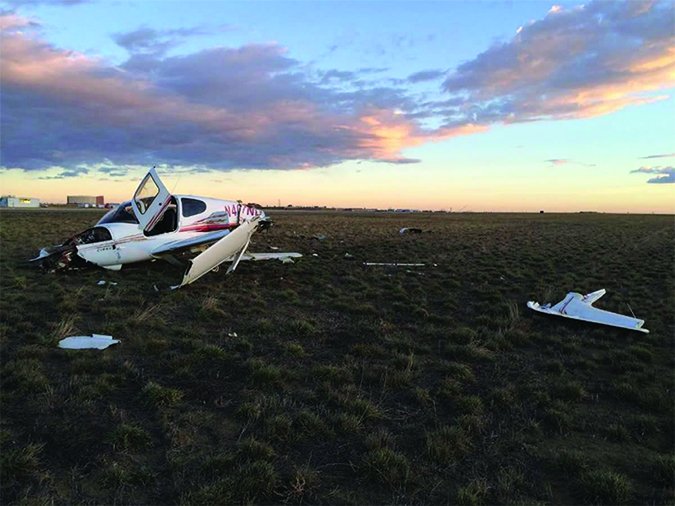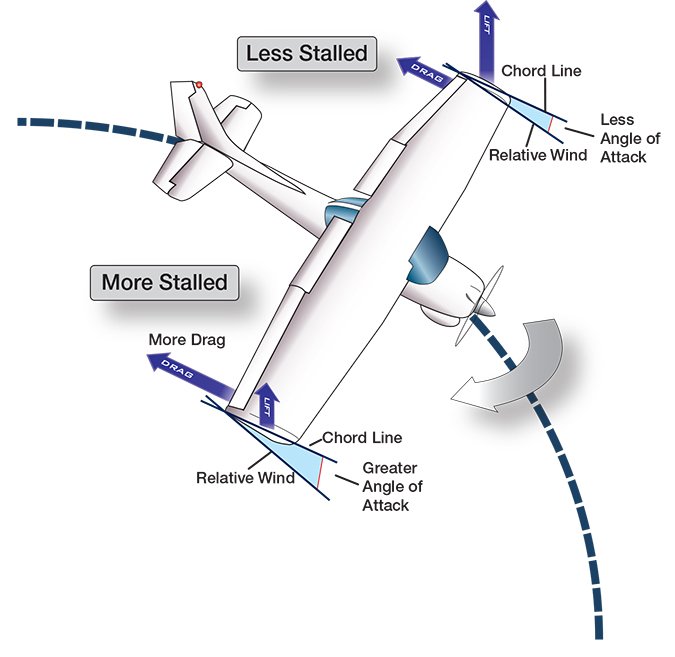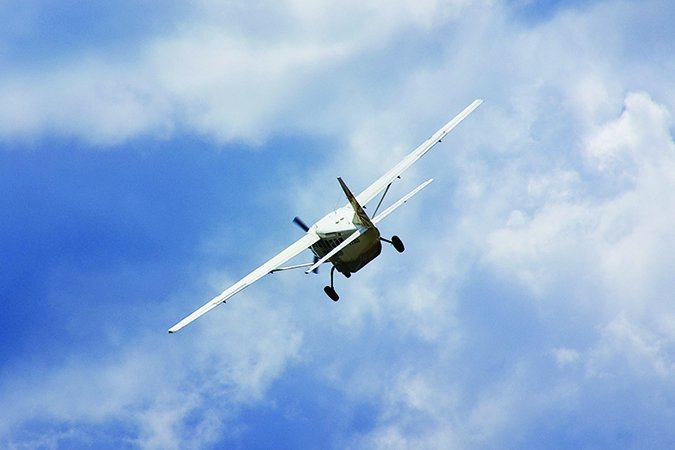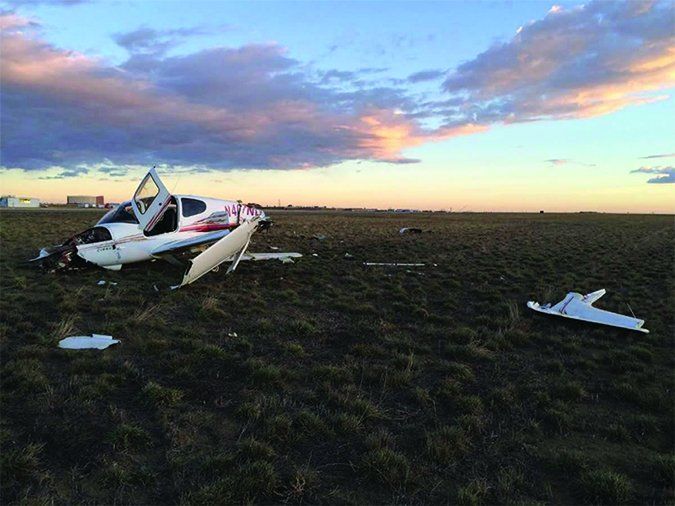We’ve always had stall/spin accidents. Today, refinements in data collection and analysis, plus improved aviation-accident taxonomy, have led the industry to adopt the loss of control in-flight, or LOC-I, nomenclature. Whatever its name, ICAO’s Common Taxonomy Team calls it “…an extreme manifestation of a deviation from intended flight path.” It leads the statistics for business, instructional and personal flying as the single most-prevalent cause of general aviation accidents.
The NTSB took a more narrow approach to defining LOC-I at its Loss of Control Safety Seminar on May 14, 2016. They put it this way: An LOC-I accident occurs when:
• The airplane won’t go where the pilot wants it to go;
• The airplane does go where the pilot doesn’t want it to go; and,
• It’s a surprise when it happens.
Knowing and understanding the factors behind most LOC-I accidents gives us some targets to work toward and allows us to focus on the top three most-likely kinds of LOC-I accidents, according to the NTSB: low-level maneuvering, landing approaches and initial climbs.

Initial Climb
First things first. Let’s talk about LOC-I accidents occurring during the initial climb after takeoff, whether it’s the first flight of the day or the nth go part of a series of touch-and-goes. This portion of a flight generally is defined as lasting from takeoff to the first power reduction, or 1000 feet above the runway. During 2008-2014, 290 LOC-I accidents occurred during this flight phase. Almost exactly half—49 percent—or 130 were fatal. As we’ll see with our other two top causes, LOC-I events during initial climb predominantly occur because the pilot fails to perform Job One—flying the airplane—as the aircraft prefers.
Specifically, LOC-I accidents occur during initial climb when:
• The pilot fails to trim properly for climb and lets the aircraft exceed its stalling/critical angle-of-attack after working and failing to push the nose down;
• The pilot attempts to take off in winds exceeding the aircraft’s demonstrated crosswind capabilities;
• When the pilot rejects the landing and fails to re-trim after applying go-around power, and the combination pitches the airplane up beyond its stalling/critical angle of attack (AoA);
• When the pilot fails to achieve a positive rate of climb out of ground effect and runs out of room.
Things these accidents all have in common include a failure to control airspeed. During initial climb, this often results from mis-set pitch trim or an inability to overpower the nose-up tendencies applying full power creates when in the landing configuration.
At the same time, failing to heed the aircraft’s operating limitations—demonstrated crosswind component, runway length or gross weight limits—presented in the airplane’s documentation also figures prominently.
Much of this can be cured with practice. Get some altitude under you and go perform some slow-flight exercises. Set up and trim for the airplane’s landing configuration, and establish a power-off glide at the recommended final approach speed. Then apply full power. Takes some effort, doesn’t it? The nose has to come down—now!—and you may need a bunch of rudder input to maintain the desired heading. And understand that until you get the nose over and can accelerate to VY, and clean up the flaps and gear, the full-power climb rate may not be what you expect.
The crosswind and gross-weight problems, meanwhile, are resolved during your pre-flight planning. While demonstrated crosswind components are not limitations, they are a guide to what a professional test pilot can do with the airplane under controlled circumstances.
And overloading the airplane isn’t smart in any circumstance. In keeping with the idea that there are no emergency takeoffs, we can pick and choose the conditions we’ll face during initial climb and postpone the takeoff or change those conditions until a safe initial climb is assured.
Landing Approaches
What goes up during an initial climb must come down during a landing approach, and that’s another flight phase when LOC-I accidents are likely to occur. The approach phase is defined as from the point of VFR pattern entry, or 1000 feet above the runway elevation, to the beginning of the landing flare. If you’re operating IFR, it’s from the initial approach fix to the landing flare. During that same 2008-2014 period, this phase of flight accounted for 350 total LOC-I accidents, with another 49 percent, or 171, of them fatal
Here again, poorly executed maneuvers account for a large share of the LOC-I accidents that occur in airport traffic patterns. The leading contender is failure to coordinate turns, whether from downwind to base or, especially, base-to-final. Either scenario too quickly can become a stall/spin or other loss of control event that stems from turning with the slip/skid ball pegged to one side or the other.
Overshooting the runway centerline when turning final is a frequent error with deadly potential. Trying to slow down more by raising the nose and using excess rudder to correct for the overshoot to return the airplane to a position in which its aligned with the runway during the base-to-final turn accounts for a significant percentage of LOC-I accidents in the approach phase. It’s a scenario tailor-made for an uncoordinated stall, which usually results in a spin.
The solutions here? Well, of course better approach management, and keeping those turns coordinated, with the slip/skid ball centered or at least beneath one of the two lines that define the “cage” in bottom of that curved glass tube (or its electronic facsimile). While stalls can readily occur with the ball out of center, it’s all but impossible for that stall to result in a spin when it’s centered. Of course, the airplane won’t stall at all with solid airspeed management.
The cures here aren’t that much different from what you’ve probably heard before. For one, if that turn to final isn’t going to work, go around—careful with the pitch attitude!—and don’t try to force the issue to salvage the approach. A little more planning of your turns in the pattern also will help, plus maybe flying a pattern to begin with. Doing so will afford you shallower banks. Solid pitch and airspeed management also helps here, preventing the stall itself and reducing the likelihood of a runway overrun from landing too fast or too far down the runway.
Stalling: LOC-I’s Most Common Element

A recent NTSB forum on reducing loss-of-control in-flight accidents highlighted a typical factor present when they occur: Stalls. According to the board, LOC-I accident investigations typically reveal some form of stall precipitated the crash. They are especially evident in single-engine aircraft LOC-I accidents.
Pilots of conventional twins must be aware of the potential for another manifestation of a stall: The VMC roll resulting from losing one engine.
The solution to an approaching stall remains the same today as it was when the Wright Brothers first experienced the phenomenon: Lower the nose. The FAA’s guidelines for stall recovery remain the same:
– Reduce angle-of-attack below the stall angle of attack (AoA);
– Push over to eliminate the stall warning;
– Level wings;
– Adjust power while first avoiding excess speed then gently but quickly raise the nose without pulling excess speed;
– And DO NOT try to power out of a stall.
Trying to power out of a stall—especially in a twin—when at stall AoA is a good way to lose control and go inverted. Close to the ground, at or less than 500 feet agl in particular, recovery is unlikely.
Accelerated Stalls: Always A Maneuvering Threat

Straight-ahead stalls seldom precipitate outright LOC-I accidents, primarily because, well, they’re straight-ahead and recovery is as easy as lowering the nose. Instead, it’s the stalls occurring while we’re maneuvering the airplane, often at relatively low altitude, that precipitate more LOC-I accidents than other causes.
Accelerated stalls occur when an airplane stalls at a higher indicated airspeed due to aerodynamic loading that occurs while maneuvering: turns. As we noted in last month’s story on turns, an aircraft’s stall speed increases with bank-angle increase, in proportion to the square root of the load factor.
An aircraft in a mere 2G turn will stall at 1.4 times its normal stall speed. That means a 4G turn produces a stall speed double what you see at the bottom of the green arc on your airspeed indicator. Put another way, a single-engine airplane that normally stalls at a CAR 3/FAR 23-maximum of 61 knots “suddenly” stalls at 122 knots during a 4G turn and at 85 knots while in a 2G turn.
Maneuvering Flight
Our third top way to get into an LOC-I accident involves maneuvering. Perhaps unsurprisingly, it’s tied with landing approaches as the flight segment during which the greatest number of accidents—350—occur. It’s also the type of LOC-I accident that is the most fatal: 70 percent, or 246 accidents studied during the 2008-2014 timeframe met the criteria. Maneuvering accidents involve low-altitude and aerobatic flight.
The most-frequent airspace for maneuvering-flight LOC-I events is adjacent to an airport pattern or the immediate environs around the airport. It’s where pilots end their en route segments and prepare for approach.
Common causes here include:
• Distractions, when the cockpit should be sterile and the pilot focused, something diverts our attention from the job of flying the airplane;
• Uncoordinated turns, either slipping or skidding, followed by a stall/spin;
• Becoming fixated on something on the ground;
• And reconfiguring the aircraft for entering the pattern.
One repeat mistake occurs when lining up downwind to enter the pattern, when the ground speeding by leads some pilots to erroneously slow their airspeed because the visual cues demand it and the airspeed indicator says otherwise. What many pilots forget is that a stiff tailwind on downwind is normal, if we’re doing it right. That same tailwind often pushes us beyond the point at which we’d make a normal turn to base, which can lead to all kinds of mischief when turning final.
Other errors that contribute to LOC-I accidents include applying too much nose-up pitch trim on final and over-correcting for drift at airspeeds already near stall speed. Sightseeing down at pattern altitudes or lower, showing friends their homes or hometowns, or air-tour cruising, brings into play the ground-fixation issue.
The solution, according to the NTSB and numerous others: Greater reliance on the flight instruments, and greater confidence in their indications. Better training won’t hurt, both in flight and in simulators.
Avoiding the Loss-of-Control Accident
In its December 2015 Safety Alert, Prevent Aerodynamic Stalls at Low Altitude, the NTSB suggests pilots:
– Avoid conditions that lead to an aerodynamic stall;
– Be able to recognize the warning signs of stall onset;
– Know and apply the appropriate recovery techniques.
But human factors are just as important to preventing LOC-I accidents as is avoiding stalls. After all, pilots know not to get into a stall at low altitude, but sometimes they can’t help it. The NTSB suggests the following as a way to mitigate those very same human factors as they apply to LOC-I accidents:
– Be honest with yourself about your knowledge of stalls, and your ability to anticipate and react to them.
– Understand and maintain currency in the airplanes you operate.
– Maximize training opportunities.
– Thoroughly prepare for the environments in which you’ll be flying.
– Anticipate, manage and minimize distractions.
– Increase situational awareness, including through devices such as angle-of-attack indicators.
Avoiding LOC-I Traps
Loss of control in flight falls into the broad category the NTSB and FAA identify as “Human Factors Accidents,” because the overwhelming majority occur because of something the pilot did or didn’t do.
Multitasking, which the board’s material labels as a human-capability “myth,” certainly plays a role, though to exactly what extent is hard to say. But with touchscreen devices and other supposedly useful forms of distraction an increasing presence in aircraft cockpits we’ve observed an increase in head-down time in cockpits flying the pattern as well as before takeoff.
A stall can occur at any airspeed, at any altitude and at any power setting. It’s wholly up to the pilot to assure stall avoidance and to maintain positive control. And an aircraft under positive control should never be involved in a loss-of-control accident.
As the list on page 16 shows, no other accident-cause category approaches LOC-I numbers. The news doesn’t get better: The vast majority of these accidents occur in daylight and visual meteorological conditions (VMC), meaning neither weather nor poor light contribute much to the them.
From 2008 through 2014, Part 91 operators suffered 1425 accidents. Of that total, 17.4 percent of all general-aviation accidents involved LOC-I, and 48 percent of the total fatalities during that period were in LOC-I accidents. The aviation community has long worked toward reducing accident numbers and rates, but LOC-I accidents have moved up the list in recent years. Those same statistics show us to be perversely resistant to recent efforts to reduce loss-of-control accidents. While knowing the numbers helps measure change, that knowledge alone does nothing to improve the record.
Consider each of these three flight phases when you fly, and watch for how your habits might contribute to the possibility of an LOC-I accident.
Dave Higdon is a Wichita-based aviation addict who writes about and photographs aviation subjects to fund a flying habit picked up during the Disco Era.




